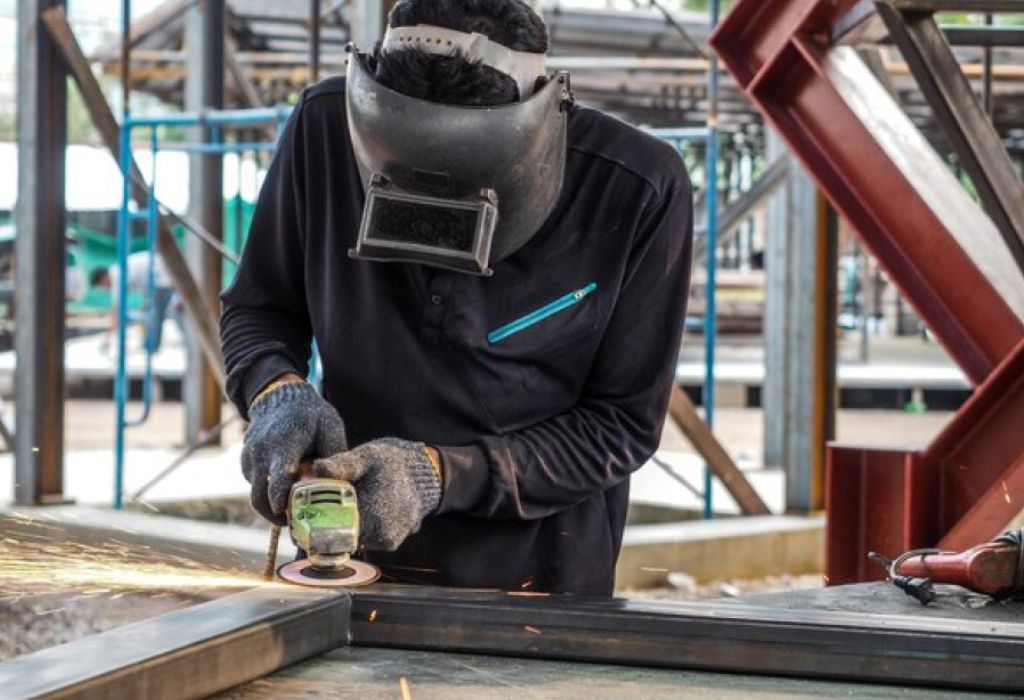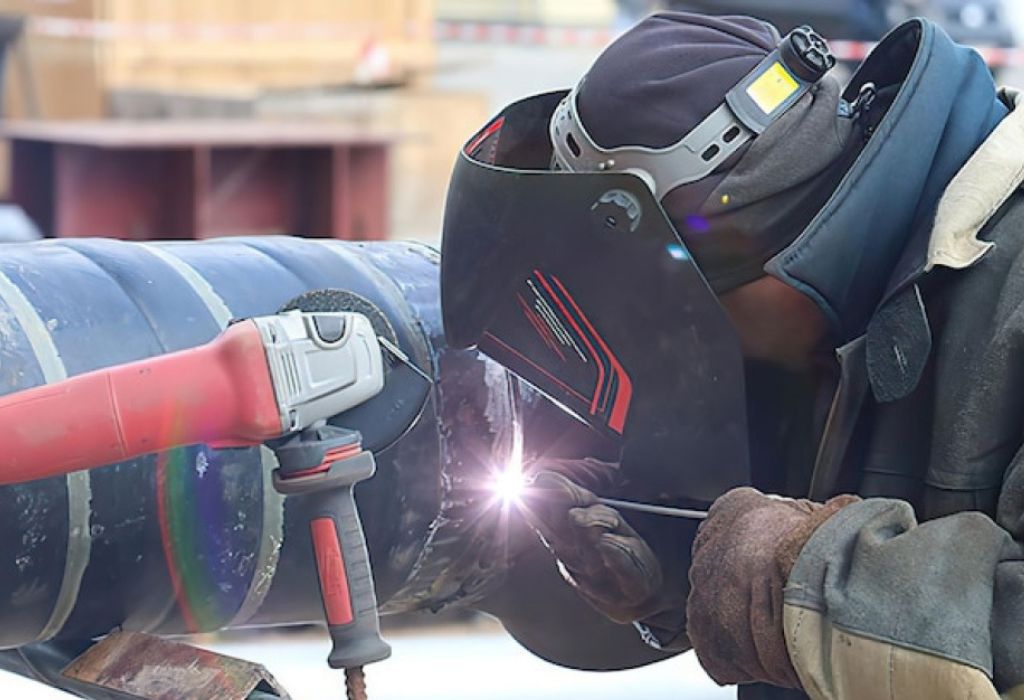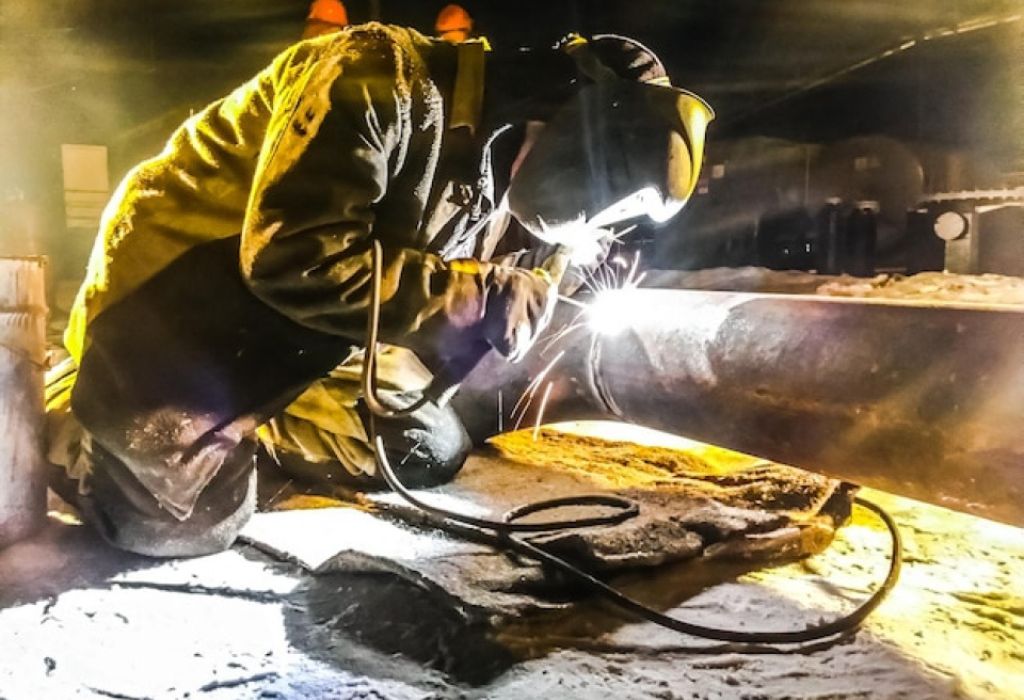A cracked cast iron part can turn a simple repair job into a frustrating challenge. The brittle nature of cast iron means it can shatter under stress, leaving sharp fractures where strength once existed.
From exhaust manifolds and machine bases to old engine blocks, these components are often irreplaceable.
Yet when they break, many fabricators wonder if MIG welding can save them. The truth is, with the right wire, heat control, and cooling process, cast iron can be welded effectively using a MIG welder.
Unlike mild steel, cast iron contains a high level of carbon — between 2% and 4% — which makes it strong but also brittle.
According to Miller Welds, rapid heating and cooling create thermal stress that leads to cracks around the heat-affected zone. That’s why success depends on managing temperature, not just the weld itself.
The main challenge lies in balancing penetration and heat input. Too much heat, and the metal hardens or fractures; too little, and the weld won’t fuse.
Using a MIG welder gives precise control over both, especially when paired with nickel or nickel-iron wire and proper preheating techniques.
This guide will break down every step of how to weld cast iron with a MIG welder, from identifying the right filler metal to controlling cooling speed.
You’ll also learn essential tricks like peening, short bead application, and slow-cooling to prevent cracking.
By the end, you’ll have the complete blueprint to restore broken cast iron parts safely, efficiently, and with professional-level precision — no special industrial setup required.
Why Cast Iron Is Tricky to Weld

Cast iron is one of the most challenging metals to weld because of its high carbon content. When heated too quickly, carbon migrates to the weld zone and forms brittle carbides that lead to cracking.
As the molten weld cools, the surrounding metal contracts and creates internal stress. This stress causes microfractures that often appear hours or even days after welding.
Understanding the metal’s structure is key to success. Gray cast iron, ductile iron, and malleable iron all respond differently to heat and filler materials. Gray cast iron, the most common type, is particularly brittle because of its graphite flake structure.
Welding without preparation or temperature control almost always leads to failure. That’s why preheating and slow cooling are essential steps when MIG welding cast iron.
Can cast iron be welded with a MIG welder?
Yes, with proper preheat, nickel wire, and cooling control, MIG welding cast iron is possible.
Why does cast iron crack during welding?
It cracks because of rapid temperature change and carbon migration into the weld.
Which type of cast iron is easiest to weld?
Ductile iron is easier due to its spherical graphite structure, which resists cracking better.
Can you MIG weld gray cast iron directly?
Yes, but it requires nickel filler and strict heat management to avoid hard spots.
Is welding cast iron worth it?
Yes, when replacement is expensive or impossible, a controlled MIG repair is highly effective.
Identify the Cast Iron and Plan the Repair
Before welding, identify what type of cast iron you’re dealing with. This helps determine preheat temperature, filler selection, and cooling method.
You can test it with a grinder spark test. Gray iron produces short red sparks with multiple forks, while ductile iron gives long yellow sparks. Magnetism is another clue — most cast irons are magnetic, but austenitic types are not.
Planning the repair is just as important as the weld itself. Some castings can’t tolerate welding heat and are better suited for cold stitching or brazing. Others require pre-baking in an oven to remove oil and moisture from pores.
Mark the full crack path before grinding to ensure complete penetration. Then clean it thoroughly using a stainless brush and acetone for oil removal.
How can you tell the difference between gray and ductile iron?
Gray iron shows red sparks, while ductile iron shows long yellow sparks.
Can all cast iron types be welded?
No, some high-carbon or alloyed irons are better repaired by brazing or stitching.
Why is cleaning so important?
Oil or carbon contamination causes porosity and weak weld fusion.
What if the part is unknown alloy cast iron?
Use conservative preheat and nickel filler to minimize cracking.
Should large parts be welded in place or removed?
Whenever possible, remove and position the part for uniform heating.
Tools, Safety Gear, and Setup
MIG welding cast iron requires the right combination of tools and protective gear. You’ll need an air-cooled MIG welder capable of short-circuit transfer, a temperature gauge, and high-quality nickel filler wire.
Gather essentials: C25 gas (75% Argon, 25% CO₂), blow torch or propane heater for preheat, clamps, fireproof blankets, wire brush, and a thermometer. Ensure the work area is well-ventilated since cast iron emits fumes during heating.
For safety, wear flame-resistant clothing, gloves, and a welding helmet with an auto-darkening lens. Keep a dry fire extinguisher nearby because preheating may ignite surrounding debris.
What shielding gas should be used for MIG on cast iron?
C25 (Argon and CO₂ mix) is suitable for short-circuit transfer.
Is flux core wire effective?
No, flux core lacks control for precise heat input and can cause porosity.
Can you MIG weld outdoors?
Yes, but protect the weld from wind to avoid shielding gas loss.
What PPE is essential?
Leather gloves, full-face helmet, and fire-resistant clothing.
Do you need temperature monitoring tools?
Yes, always use temperature sticks or infrared thermometers for accurate preheat.
Choosing the Right Filler Material
The most crucial factor in cast iron MIG welding is filler selection. Use nickel-based wire (ERNi-CI) or nickel-iron (ERNiFe-CI) for strength and machinability.
Pure nickel wire produces softer welds that can be easily machined later. Nickel-iron wire creates stronger welds for heavy-duty parts but may be harder to grind. Mild steel wire can be used for temporary repairs, but it increases cracking risk.
Ensure the wire diameter matches your settings — 0.030″ or 0.035″ are ideal for controlled heat. Avoid large wires that require high amperage.
Which filler wire works best for cast iron?
Nickel-based ERNi-CI is best for machinability and crack resistance.
When should nickel-iron filler be used?
For heavy-duty repairs that demand more strength.
Can mild steel wire be used?
Only for low-stress repairs, as it hardens quickly.
Does filler wire affect appearance?
Yes, nickel welds show a silver hue against gray iron.
Why avoid large-diameter wire?
It needs more current, increasing heat and crack risk.
Preparing and Cleaning the Workpiece

Preparation determines success. Start by stop-drilling each end of the crack with a small bit to prevent spreading. Then, grind a U-shaped groove along the crack for deeper penetration.
Use a stainless or nickel brush to remove oxidation and residue. Degrease the surface with acetone or heat the area to remove trapped oil in pores. Oil contamination leads to porous welds and weak bonds.
Ensure parts fit tightly with minimal gaps. Use clamps to hold alignment but avoid over-tightening, which can introduce stress during welding.
Why stop-drill a crack?
It prevents the crack from spreading as heat is applied.
Why is a U-groove better than a V-groove?
It provides smoother fusion and reduces sharp stress points.
Should oil be burned off before welding?
Yes, heat it slightly to vaporize oil before applying filler.
Can parts be clamped tightly?
Use gentle pressure — too tight restricts expansion during heating.
Should all paint and rust be removed?
Yes, clean metal ensures proper fusion and minimizes porosity.
Preheating and Temperature Control
Preheating is the most critical step. Heat the cast iron slowly to 500–600°F (260–315°C) to reduce temperature shock. Maintain even heat across the entire casting, not just the weld zone.
Avoid direct flame on the weld groove. Instead, move the torch in wide circles to spread heat evenly. Use thermal crayons or an infrared thermometer to monitor the surface temperature.
During welding, keep interpass temperature steady — do not let it cool below 350°F until welding is complete.
Why preheat before MIG welding cast iron?
Preheat minimizes thermal shock and prevents cracks.
How to measure preheat temperature accurately?
Use heat sticks or infrared thermometers for precision.
Can small parts be welded without preheat?
Yes, but use very short beads and allow natural cooling between passes.
What happens if cast iron is overheated?
It can distort or lose structural strength.
Why maintain interpass temperature?
Keeping it stable reduces sudden expansion and contraction.
MIG Welding Technique for Cast Iron
Set your MIG welder for short-circuit transfer to minimize heat input. Use DCEP polarity (direct current electrode positive). Start with low voltage and adjust wire feed for a smooth, crackling sound.
Weld short beads about ½ to 1 inch long. Peen each bead immediately after deposition with a rounded hammer to relieve stress. Let the metal cool slightly before continuing the next pass.
Move around the casting in short sections to distribute heat evenly. Alternate sides if possible to maintain balance.
How long should each weld bead be?
Keep beads under 1 inch to reduce stress concentration.
Why peen after welding?
Peening compresses the bead and relieves tensile stress.
Can MIG welds overlap?
Yes, but brush off slag between passes for clean fusion.
What welding motion works best?
A steady stringer bead — avoid weaving.
Should interpass cooling time be long?
Yes, allow the surface to dull before continuing.
Post-Weld Cooling and Stress Relief
Slow cooling is as important as preheating. Once welding is complete, cover the part in vermiculite, dry sand, or a welding blanket to retain heat. Allow it to cool gradually over several hours or overnight.
Rapid cooling leads to brittle white iron formation and internal cracking. For large parts, use an oven to control cooldown speed precisely.
After cooling, inspect the weld visually and tap lightly to listen for hollow sounds, which may indicate internal cracks.
Why is slow cooling critical?
It prevents stress and cracking from thermal contraction.
Can water or air be used for cooling?
No, both cause rapid cooling and brittleness.
How long should cooling take?
At least 6–12 hours for thick parts.
Can you wrap parts in blankets or sand?
Yes, both retain heat and ensure gradual temperature drop.
When to inspect for cracks?
After complete cooldown and cleaning of the weld.
Common Welding Problems and Fixes
Even with care, cast iron MIG welding can have issues like porosity, hard spots, or delayed cracking. These problems usually stem from poor cleaning, uneven preheat, or high amperage.
Always verify your gas coverage and wire feed rate. If the weld looks rough or porous, check for wind drafts or contaminated gas.
Why do cracks appear after cooling?
Uneven heating or lack of preheat causes stress fractures.
What causes porosity?
Trapped oil, moisture, or gas flow interruptions.
Can a cracked weld be repaired again?
Yes, grind it out and re-weld using shorter beads.
Why are some welds too hard to machine?
High heat forms carbide layers in the HAZ.
How to fix discoloration or spatter?
Adjust gas flow and clean between passes with a wire brush.
When to Use Alternative Repair Methods

MIG welding works well for many repairs, but not all cast iron parts can handle heat. In those cases, brazing, TIG brazing, or metal stitching may be better.
Brazing uses bronze filler at lower temperatures, reducing stress and distortion. Stitching inserts threaded pins without heat, perfect for long cracks or antique parts.
When should brazing be chosen?
When heat control is critical or part warping is risky.
Is TIG brazing safer for thin sections?
Yes, it provides low-heat joining and clean appearance.
When is stitching best?
On large cracks or high-stress areas.
Can you combine welding and stitching?
Yes, sometimes mechanical stitching and MIG pads together improve strength.
Do brazed repairs last long?
Yes, with proper surface prep, they can last for years.
Finishing and Inspection
After cooling, grind the weld flush if required. Clean the surface with a brush and test for leaks or cracks. Pressure testing or dye penetrant inspection helps verify integrity.
If the weld passes inspection, the surface can be machined, painted, or coated as needed. Always record filler type, preheat temperature, and cooling time for future reference.
Are nickel welds machinable?
Yes, ERNi-CI is soft enough for machining.
Should pressure testing be done?
Yes, especially for housings or tanks.
When can painting begin?
After complete cooling and surface cleaning.
Why document the repair?
It helps replicate successful settings next time.
Can repaired cast iron parts last long-term?
Yes, properly welded parts often last as long as originals.
Conclusion
Learning how to weld cast iron with a MIG welder takes patience, control, and attention to detail. Preheating, using nickel filler, short beads, and slow cooling are the pillars of success.
This technique restores expensive or irreplaceable cast iron components, saving both time and money. With careful setup, even complex cracks can be repaired safely and permanently.
Before striking the next arc, remember — preparation and cooling are just as important as the weld itself. Follow these steps, and your MIG welds on cast iron will hold strong for years to come.

I’m Darrell Julian, the founder, lead writer, and hands-on welding enthusiast behind ArcWeldingPro.com. With more than 15 years of real-world welding experience, I created this platform to share what I’ve learned in the field, in the shop, and in the heat of the arc.


